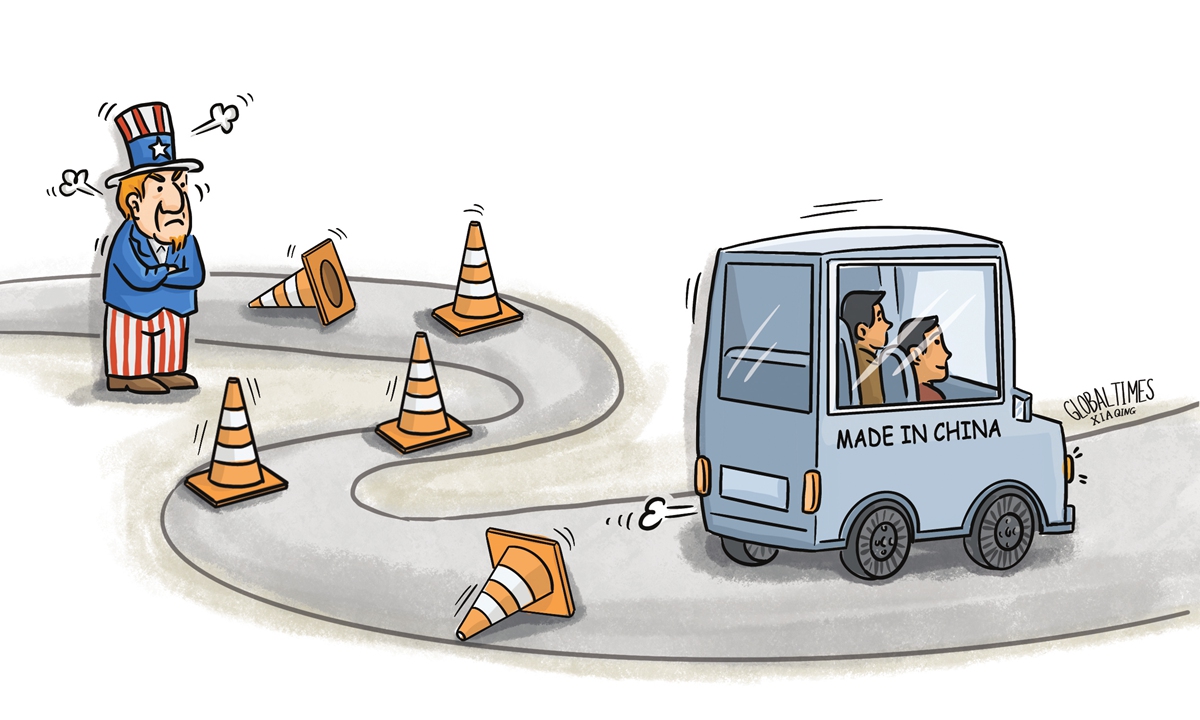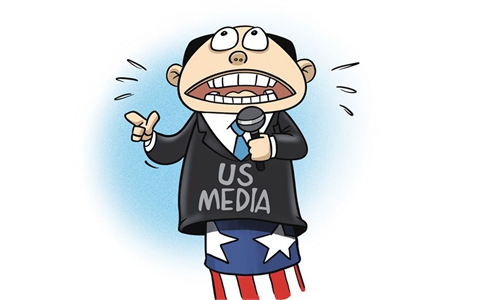China resilient despite US ‘policing’ of supply chains

Illustration: Xia Qing/Global Times
The US has continuously escalated its global siege of Chinese manufacturing.The US President Joe Biden signed into law the Uyghur Forced Labor Prevention Act on December 23. There are two key points in this act. First, it shifts the burden of proof to companies from customs officials. Firms will need to proactively prove that their factories, and those of their suppliers, do not use "slavery or coercion" to produce products exported to the US.
Second, it is presumed that all products made in Xinjiang have used "forced labor" unless certified as "no forced labor" by the US authorities. US Customs and Border Protection will begin applying the "rebuttable presumption" 180 days from enactment. The New York Times said on December 23 that the act is "Washington's first comprehensive effort to police supply chains." But this is by no means "policing supply chains." This is just the beginning of a war on Made in China products.
According to the act, all products entering the US market, as long as they contain components or raw materials made in China's Xinjiang, should be filed and reported by firms themselves. Therefore, it is not "policing" US production lines, but global production lines instead. It is not only attacking products made in Xinjiang, but also those made in China as part of the global production chain. This is because Made in Xinjiang is deeply embedded in Made in China and is an inseparable part of it. Just as Xinjiang is an inseparable part of China's territory.
Why is Made in China the target?
This is because the Chinese manufacturing sector is the foundation of China's rise. It relies on global supplies and serves the world. Meanwhile, it empowers China's development. An article in the March 14, 2015 edition of the Economist said, "By making things and selling them to foreigners, China has transformed itself - and the world economy with it… The white heat of China's ascent has forged supply chains that reach deep into South-East Asia. This 'Factory Asia' now makes almost half the world's goods."
The Economist also mentioned, "In 1990 it produced less than 3% of global manufacturing output by value; its share now is nearly a quarter. China produces about 80% of the world's air-conditioners, 70% of its mobile phones and 60% of its shoes."
Former US president Donald Trump initiated decoupling. Incumbent President Joe Biden has gone further and planned to break supply chains. The "decoupling" only involves China and the US, but the "chain" is about the whole world.
"The US is trying to mobilize allies to kick China out of the international system. China is now being kicked globally, not only in the US, in terms of industrial lines, supply lines and high-tech lines," said Chinese Ambassador to the US Qin Gang in an interview with major American media outlets on December 20.
This is the competition Washington has been talking about.
However, Washington underestimates China's capability, especially the resilience of Chinese manufacturing. What we see during the COVID-19 pandemic is the advantage of the scale, scope and level of Made in China, as well as its increasingly prominent flexibility. It is deeply embedded in global industrial supply chains, meeting a wide range of market demand at different levels, while complementing the manufacturing industries of many countries, leading to an energized Chinese market. Made in China can by no means be easily stripped out of the global chains.
This is proven by the trade growth between China and the US, and by the fact that trade volume between China and India has recently surpassed $100 billion this year.
It's foreseeable that the US will continue to crack down on Chinese manufacturing by any means possible, which is actually a move forcing more countries to take sides and will bring a huge impact to the global order and existing trade.
Facing such US hegemony, China needs to consolidate its own manufacturing strength while advancing connections with its global counterparts, which requires a more open market. The two need to interact more closely to further leverage market advantages to attract more foreign investment into China's manufacturing sector and to strengthen Chinese investment in overseas manufacturing.
The author is a senior editor with People's Daily, and currently a senior fellow with the Chongyang Institute for Financial Studies at Renmin University of China. dinggang@globaltimes.com.cn. Follow him on Twitter @dinggangchina


